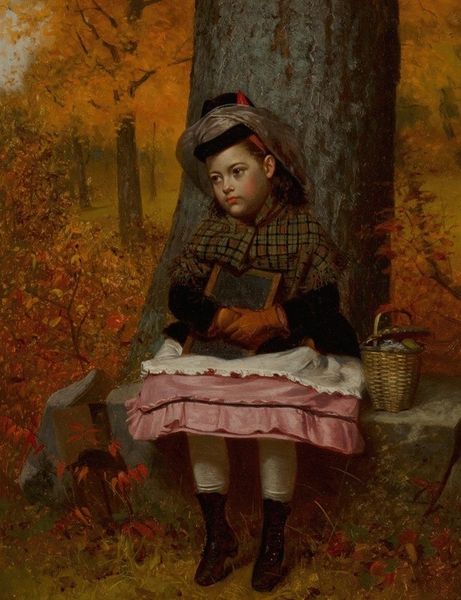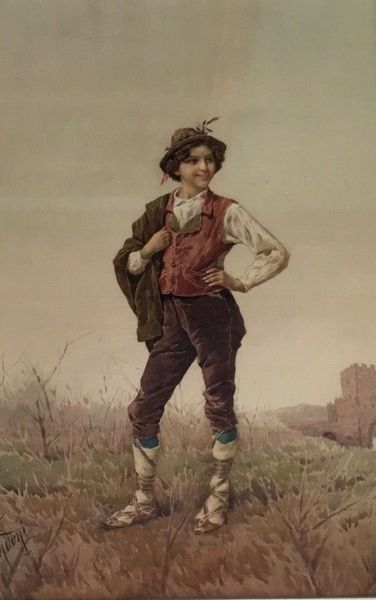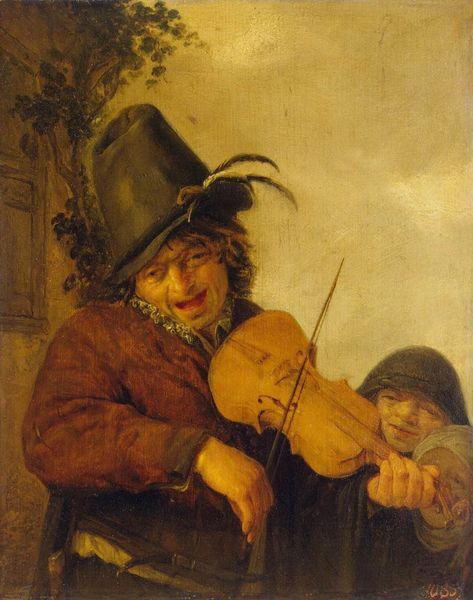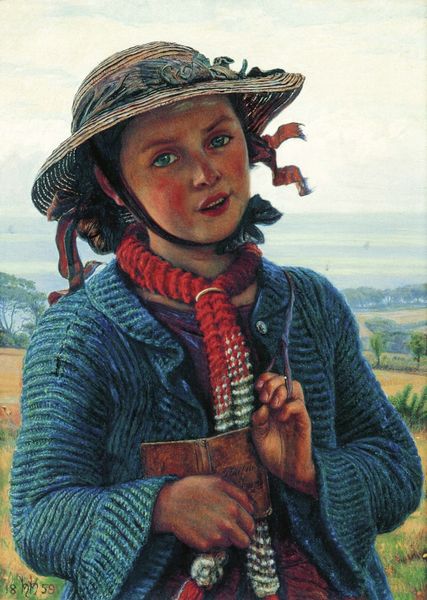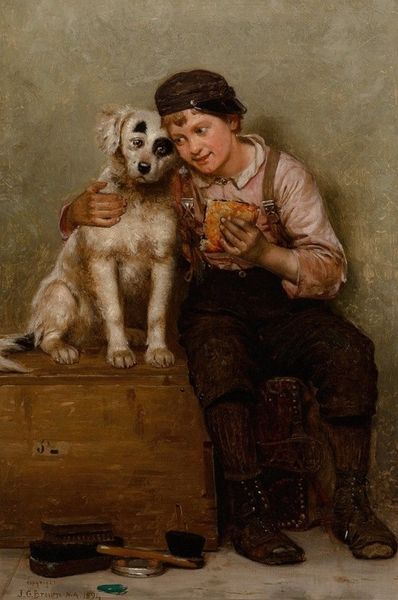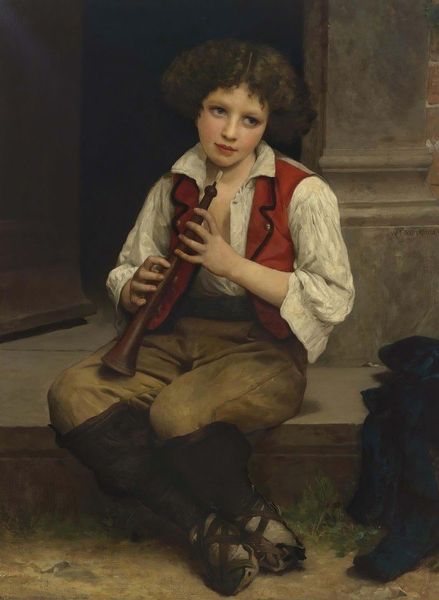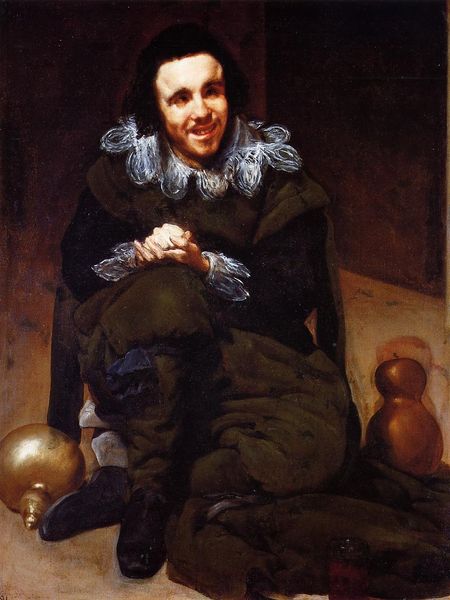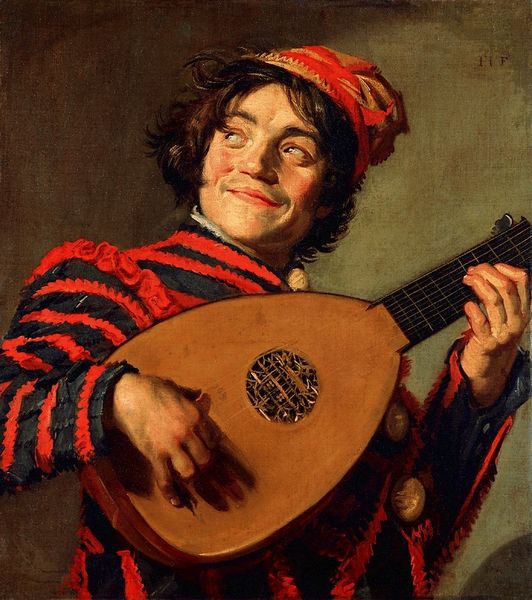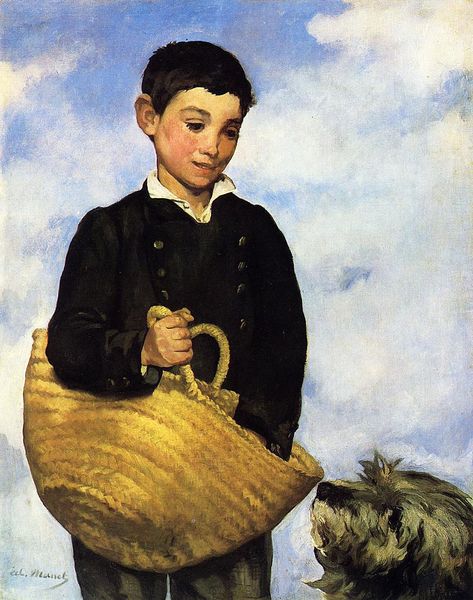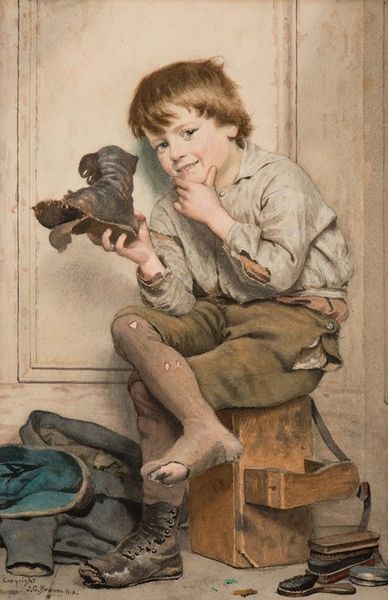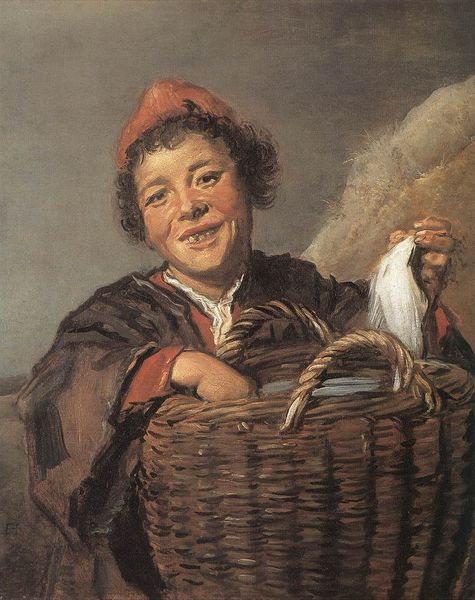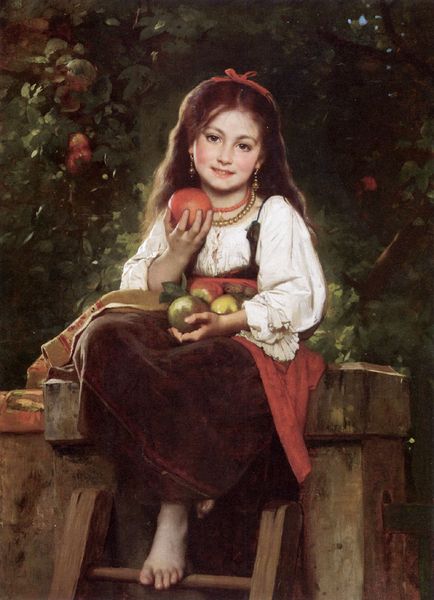
painting, oil-paint
#
portrait
#
painting
#
oil-paint
#
landscape
#
romanticism
#
costume
#
genre-painting
Dimensions: 75 x 100 cm
Copyright: Public domain
Curator: Welcome. Today, we're considering Filippo Indoni's painting, "Young Italian Shepherd," held in a private collection. Editor: He certainly looks like he's enjoying himself. I get an immediate sense of rural ease and carefree youth just looking at him, what with that instrument in his hands. The coloring is rather interesting too; the way the artist’s chosen earth tones for most of the painting contrasting against the blue sky almost romanticizes the moment depicted here. Curator: The charm is certainly there, and those costume elements resonate deeply. The hat decorated with flowers, the furry vest… these visual cues root him within the romanticized pastoral tradition. They speak of innocence, simplicity, a connection to nature untainted by urban artifice. The flute in his hands further amplifies that sense of an idealized past, referencing classical imagery of shepherds as poets and musicians. Editor: Absolutely, but I am wondering about the means by which this ideal was reached. That carefully rendered vest, for instance—the texture suggests considerable labor in both its crafting and its representation in paint. Then there’s the gourd; not just some rustic container, but a deliberately chosen, handled, and transported object. The question becomes, for whom were these material signals of shepherd life actually made and by whom? Curator: That is a valid point. This isn’t necessarily a documentary portrayal, but rather a crafted image designed to evoke particular emotions and ideas in a specific audience, very likely city dwellers removed from that reality. It evokes that powerful longing for an imaginary and simpler time. Editor: So it’s not only a study of pastoral life, but potentially also a symptom of broader societal anxieties around industrialization and the loss of connection to the land—especially as these paintings were mostly viewed inside parlors. It would be interesting to trace back the precise source of pigments Indoni employed—how and where he found these paints that so skillfully represented the Italian landscape of that time, you see? Curator: Looking at the interplay between the symbolism and the painting’s likely social function really deepens the experience, don’t you think? We started with that initial feeling of innocent charm and discovered many complex questions about what this kind of image actually represents, both consciously and unconsciously. Editor: Indeed. This painting invites us to investigate both the allure of that curated image and also to question the labor that made the allure of the final artistic piece visible in its materiality.
Comments
No comments
Be the first to comment and join the conversation on the ultimate creative platform.
